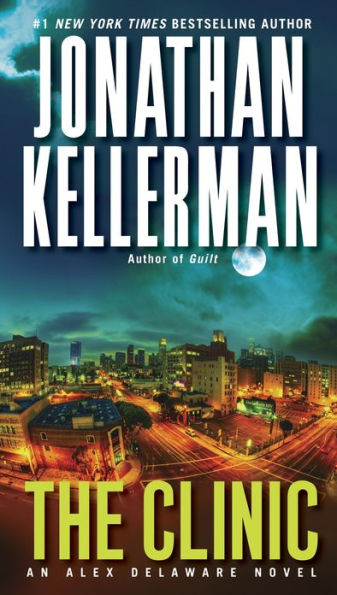Read an Excerpt
Few murder streets are lovely. This one was.
Elm-shaded, a softly curving stroll to the University, lined with generous haciendas and California colonials above lawns as unblemished as fresh billiard felt.
Giant elms. Hope Devane had bled to death under one of them, a block from her home, on the southwest corner.
I looked at the spot again, barely exposed by a reluctant moon. The night-quiet was broken only by crickets and the occasional late-model well-tuned car.
Locals returning home. Months past the curious-onlooker stage.
Milo lit up a cigarillo and blew smoke out the window.
Cranking my window down, I continued to stare at the elm.
A twisting trunk as thick as a freeway pylon supported sixty feet of opaque foliage. Stout, grasping branches appeared frosted in the moonlight, some so laden they brushed the ground.
Five years since the city had last pruned street trees. Property-tax shortfall. The theory was that the killer had hidden under the canopy, though no hint of presence other than bicycle tracks, a few feet away, was ever found.
Three months later, theory was all that remained and not much of that.
Milo's unmarked Ford shared the block with two other cars, both Mercedeses, both with parking permits on their windshields.
After the murder, the city had promised to trim the elms. No follow-through yet.
Milo had told me about it with some bitterness, cursing politicians but really damning the cold case.
"A couple of news stories, then nada."
"Current events as fast food," I'd said. "Quick, greasy, forgettable."
"Aren't we the cynic."
"Professional training: aiming for rapport with the patient."
That had gotten a laugh out of him. Now he frowned, brushed hair off his forehead, and blew wobbly smoke rings.
Edging the car up the block, he parked again. "That's her house." He pointed to one of the colonials, smallish, but well-kept. White board front, four columns, dark shutters, shiny fittings on a shiny door. Three steps up from the sidewalk a flagstone path cut through the lawn. A picket gate blocked the driveway.
Two upstairs windows were amber behind pale curtains.
"Someone home?" I said.
"That's his Volvo in the driveway."
Light-colored station wagon.
"He's always home," said Milo. "Once he gets in he never leaves."
"Still mourning?"
He shrugged. "She drove a little red Mustang. She was a lot younger than him."
"How much younger?"
"Fifteen years."
"What about him interests you?"
"The way he acts when I talk to him."
"Nervous?"
"Unhelpful. Paz and Fellows thought so, too. For what that's worth."
He didn't think much of the first detectives on the case and the common ground probably bothered him as much as anything.
"Well," I said, "isn't the husband always the first suspect? Though stabbing her out on the street doesn't sound typical."
"True." He rubbed his eyes. "Braining her in the bedroom would have been more manual. But it happens." Twirling the cigar. "Live long enough, everything happens."
"Where exactly were the bicycle tracks?"
"Just north of the body but I wouldn't make much of those. Lab guys say they could have been anywhere from one to ten days old. A neighbor kid, a student, a fitness freak, anyone. And no one I talked to when I did the door-to-door noticed an unusual biker that whole week."
"What's an unusual biker?"
"Someone who didn't fit in."
"Someone nonwhite?"
"Whatever works."
"Quiet neighborhood like this," I said, "it's surprising no one saw or heard anything at eleven p.m."
"Coroner said it's possible she didn't scream. No defense wounds, no tentatives, so she probably didn't struggle much."
"True." I'd read the autopsy findings. Read the entire file, starting with Paz and Fellows's initial report and ending with the pathologist's dictated drone and the packet of postmortem photos. How many such pictures had I seen over the years? It never got easier.
"No scream," I said, "because of the heart wound?"
"Coroner said it could have collapsed the heart, put her into instant shock."
He snapped thick fingers softly, then ran his hand over his face, as if washing without water. What I could see of his profile was heavy as a walrus's, pocked and fatigued.
He smoked some more. I thought again of the preautopsy photos, Hope Devane's body ice-white under the coroner's lights. Three deep purple stab wounds in close-up: chest, crotch, just above the left kidney.
The forensic scenario was that she'd been taken by surprise and dispatched quickly by the blow that exploded her heart, then slashed a second time above the vagina, and finally laid facedown on the sidewalk and stabbed in the back.
"A husband doing that," I said. "I know you've seen worse but it seems so calculated."
"This husband's an intellectual, right? A thinker." Smoke escaped the car in wisps, decaying instantly at the touch of night air. "Truth is, Alex, I want it to be Seacrest for selfish reasons. Cause if it's not him, it's a goddamn logistical nightmare."
"Too many suspects."
"Oh yeah," he said, almost singing it. "Lots of people who could've hated her."




